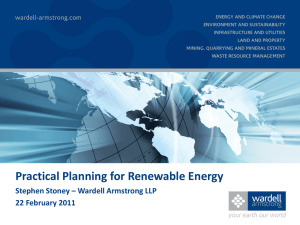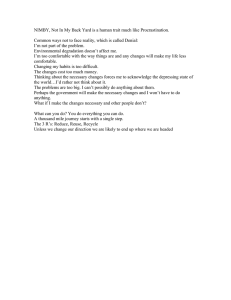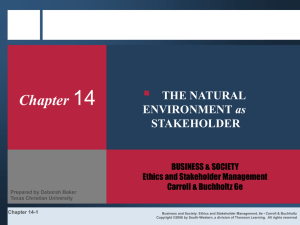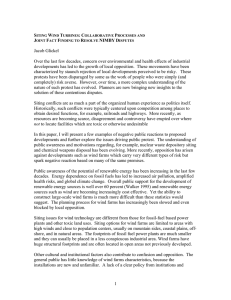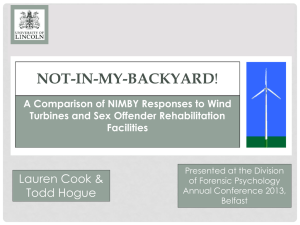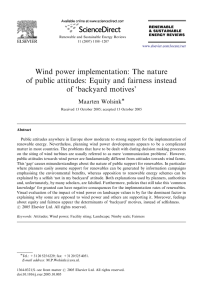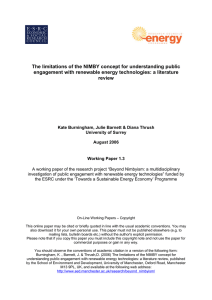Document 13641041
advertisement
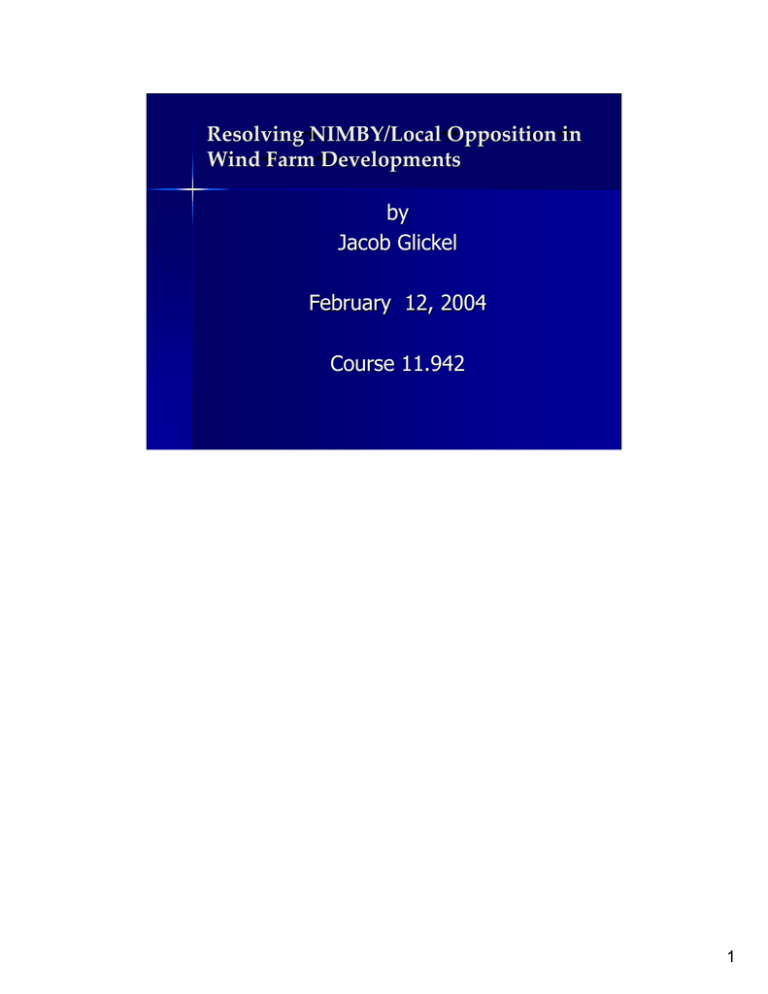
Resolving NIMBY/Local Opposition in Wind Farm Developments by Jacob Glickel February 12, 2004 Course 11.942 1 Development of NIMBY and Institutions General understanding of the basic concepts underlying NIMBY Comprehending public reactions to the various process of wind farms planning and development NIMBYism is a local oppositional response to intrusive land uses NEPA is a structured mechanism with which to formerly address local concerns 2 Historical View of NIMBY Irrational Selfish Prudent – Move beyond blaming the opposition 1) Not willing to accept any risks: just uncertain of the risks, just as experts are. 2) Self-interest – looking out to maximize one property value. 3) Organize resources to provide a different voice to scientific reports. 3 Cognitive Liberation of NIMBY Movement Continual adjustment of opposition to respond to the problem – Chemical weapons disposal in Madison County, Kentucky How are issues defined – Framing of the Question – Approach and attitude of institutions affects creditability of opposition 1) This is not something that will go away once certain issues are addressed. 4 Traditional and Untraditional Aspects of Wind Developments Traditional Majority of impacts felt locally Imposed from outside region Broad‐ Broad‐based support for abstract idea Untraditional Local benefits to public health Value of ascetics is main Issue Divided support by environmental community Once installed, increases acceptance controversial 5 Common Arguments on Wind Developments Cons – Renewable energy cannot solve our energy problems – Wind turbines are unreliable and expensive – Wind turbines spoil the scenery and cause noise pollution – Wind Turbines kill birds Pro – Renewable energy is an alternative to other energy sources – Climate change must be taken seriously – Wind energy is limitless, non‐ non‐polluting and safe Wolinsk (2001) 6 Attributes of Wind Developments Size of a project doesn’t indicate any relevance to prediction of attitude (Erp (Erp 1997) Attitudes towards developer, local decision makers and decision process have significant impact on public attitude General lower acceptance of project under planning and construction phase, but attitudes change once project is finished Rural vs City Dwellers 7 Further Complexities Sites developed have high value within the community Proposals develop rapidly with inadequate local consultation Lack of coordinated national planning policy 8 Institutional Problems Institutions need to reflect these unique attributes of wind development Complex attitudes should be reflected in process design 9 Steps to Address NIMBY Smaller scale, community based projects Means of compensation for local community Step learning curve 10
